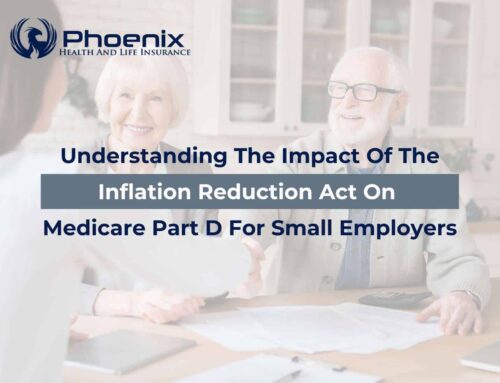Navigating the Changes to Part D Prescription Drug Plans in 2025: What You Need to Know
As the healthcare landscape continues to evolve, significant changes are on the horizon for Medicare Part D prescription drug plans in 2025. These changes, driven by legislative reforms and policy updates, aim to enhance affordability, increase transparency, and improve access to medications for Medicare beneficiaries. In this blog, we’ll explore the key changes coming to Part D prescription drug plans and what they mean for enrollees.
1. Introduction of a $2,000 Out-of-Pocket Cap
One of the most impactful changes to Part D prescription drug plans in 2025 is the introduction of a $2,000 annual cap on out-of-pocket expenses for beneficiaries. This cap is a significant shift aimed at reducing the financial burden on individuals who require expensive medications. Once a beneficiary’s out-of-pocket costs reach $2,000 in a year, they will no longer have to pay additional costs for covered prescription drugs for the remainder of that year.
This cap will provide much-needed relief for Medicare beneficiaries, particularly those with chronic conditions or those who require high-cost specialty medications. It represents a substantial improvement in making prescription drugs more affordable and predictable.
2. Changes to the Catastrophic Coverage Phase
In conjunction with the out-of-pocket cap, the catastrophic coverage phase of Part D plans will undergo changes. Currently, once beneficiaries reach a certain out-of-pocket threshold, they enter the catastrophic coverage phase, where they pay a small percentage of drug costs. With the introduction of the $2,000 cap, this phase will be restructured to align with the new cap, ensuring that beneficiaries are not burdened with high costs once they hit the out-of-pocket limit.
3. Reduction in Beneficiary Cost Sharing
Starting in 2025, Medicare Part D plans will see a reduction in beneficiary cost sharing for certain drugs. This includes lower copayments and coinsurance amounts for generic and brand-name medications. The goal is to make a wider range of medications more affordable for all beneficiaries, encouraging adherence to prescribed treatments and improving overall health outcomes.
4. Increased Negotiating Power For Medicare
A key element of the 2025 changes is the increased negotiating power for Medicare when it comes to drug prices. The Inflation Reduction Act of 2022 included provisions that allow Medicare to negotiate prices for certain high-cost drugs directly with manufacturers. These negotiated prices will be reflected in Part D plans, potentially leading to lower costs for beneficiaries.
This change is expected to put downward pressure on drug prices, making essential medications more accessible and affordable for millions of Medicare beneficiaries.
5. Enhanced Transparency and Simplified Plan Choices
To help beneficiaries make more informed decisions, there will be enhancements in the transparency of Part D plans. This includes clearer information on drug pricing, formulary structures, and out-of-pocket costs. The aim is to simplify the plan selection process, allowing beneficiaries to choose plans that best meet their medication needs and financial situations.
Additionally, the Medicare Plan Finder tool will be updated to provide more user-friendly and detailed information, making it easier for beneficiaries to compare plans and understand their coverage options.
6. Improvements In Access To Vaccines
Starting in 2025, all vaccines recommended by the Advisory Committee on Immunization Practices (ACIP) will be covered under Part D with no out-of-pocket costs for beneficiaries. This change will improve access to important vaccines, promoting public health and preventing the spread of infectious diseases among the elderly and vulnerable populations.
7. Phased Elimination of the Coverage Gap (“Donut Hole”)
The coverage gap, commonly known as the “donut hole,” has been gradually closing over the past few years. By 2025, this gap will be fully phased out, meaning beneficiaries will no longer experience a period where they must pay a higher share of drug costs out of pocket. This elimination will provide more consistent and predictable costs for beneficiaries throughout the year.
Enhancing Medicare Part D for a Healthier Future
The changes coming to Medicare Part D prescription drug plans in 2025 represent a significant step forward in improving the affordability, accessibility, and transparency of prescription drug coverage for Medicare beneficiaries. From the introduction of the $2,000 out-of-pocket cap to the enhanced negotiating power for Medicare and the elimination of the coverage gap, these reforms are designed to provide substantial financial relief and improve health outcomes for millions of seniors and disabled individuals.
As these changes take effect, it’s essential for beneficiaries to stay informed and review their plan options carefully. Consulting with a Medicare advisor or using updated tools like the Medicare Plan Finder can help ensure that you select the best plan to meet your needs in this evolving landscape.
With these reforms, Medicare Insurance Agents is poised to deliver more effective and equitable prescription drug coverage, helping beneficiaries manage their health with greater confidence and peace of mind. Contact us!
Phoenix Health Insurance
20823 N Cave Creek RD, Building B Suite 101
Phoenix, AZ 85024
Phone: (623) 516-8300
Email: [email protected]
Website: www.phxhealthinsurance.com









